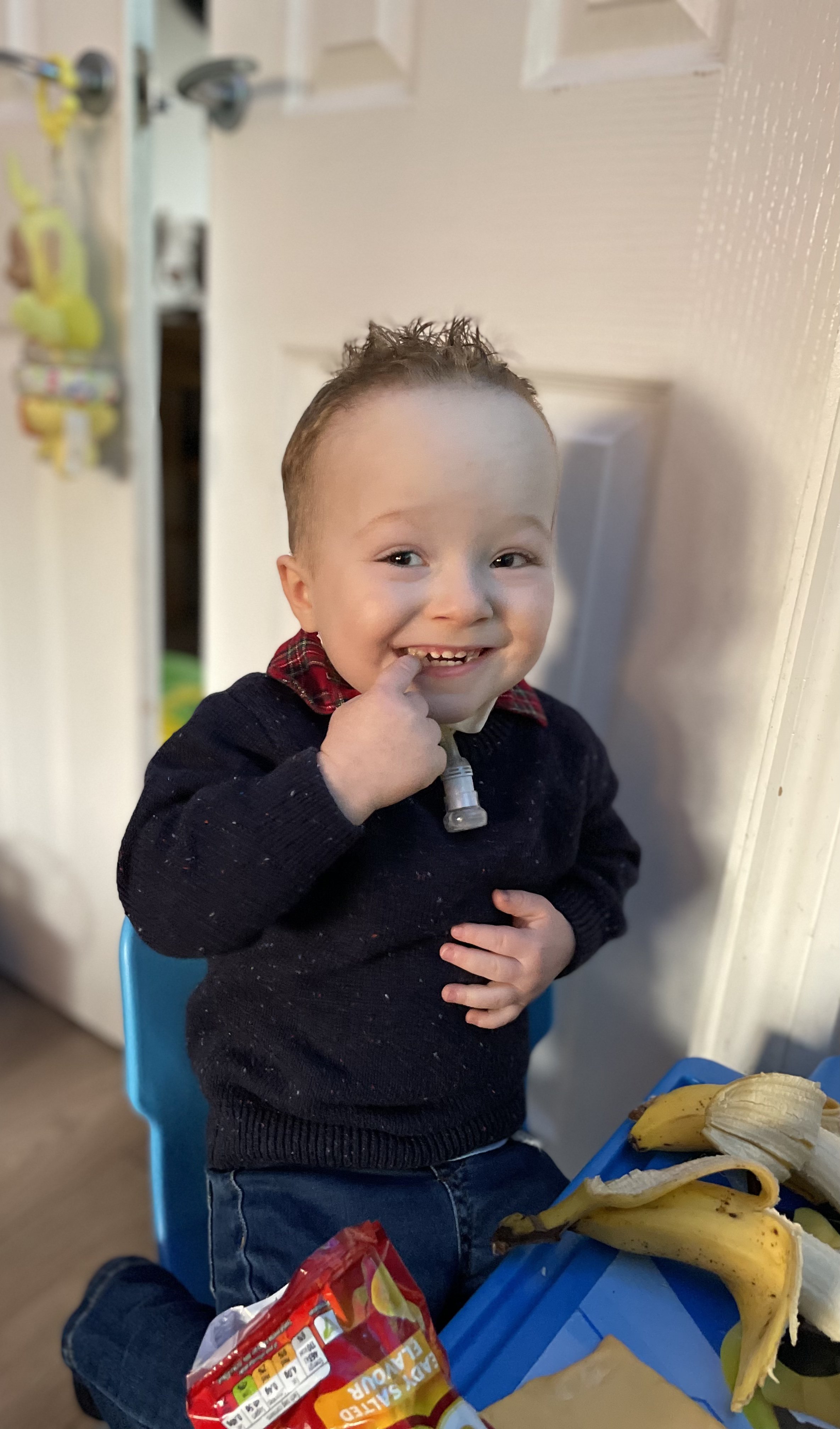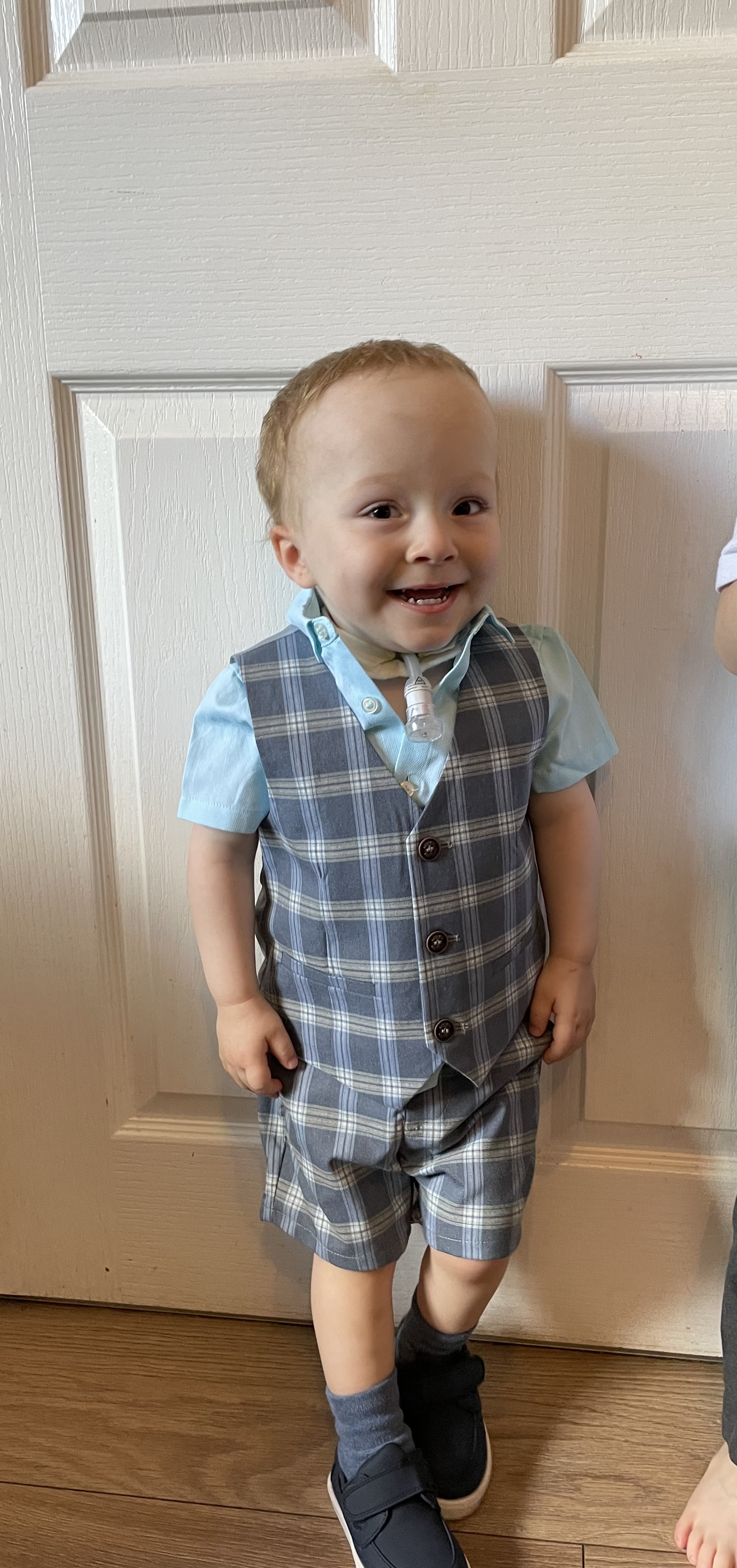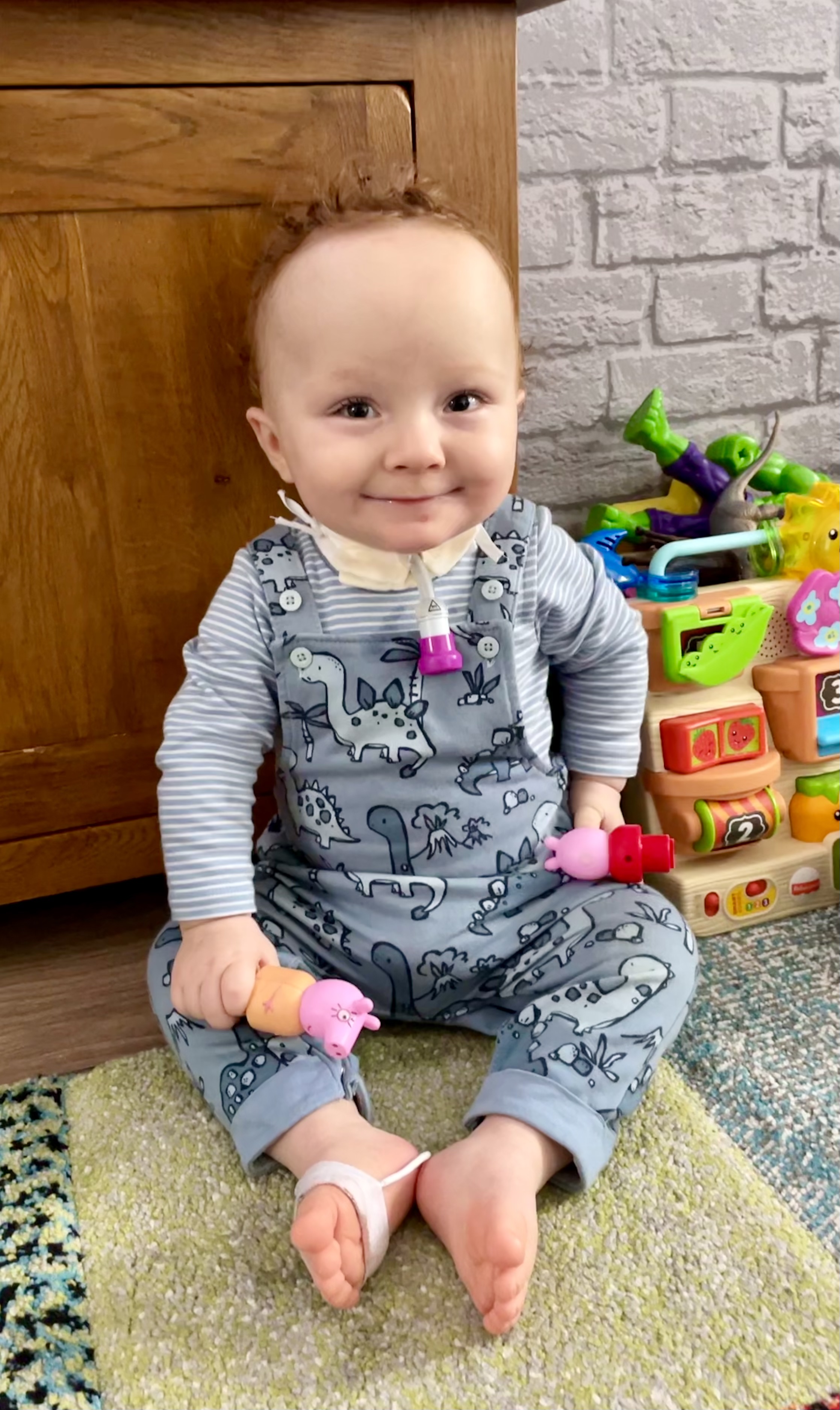What is a tracheostomy?
This page has been specifically written for parents/carers whose child has a tracheostomy fitted and have or will be trained by a team of professionals on how to care for their child at home.
A tracheostomy is an opening in the front of your child’s neck which will help them to breathe. It involves a tube which enters the trachea (windpipe) to create an opening to allow air to pass into the lungs. This tube may be used on its own or it can also be connected to oxygen or a ventilator (a breathing machine which helps the lungs to work).
Tracheostomies come in various types and sizes which can be adapted as your child grows. The tube has ties or a velcro strap attached which passes around the neck so it can be held securely in place.




Why does my child need a tracheostomy?
There are many reasons why a child may require a tracheostomy. It is best to discuss with your child’s doctor why your child needs a tracheostomy. Some potential reasons for tracheostomies are:
- Difficulty breathing using their upper airway above the windpipe. This could be due to abnormalities of the nose and mouth, paralysed vocal cords, narrowing or floppiness of the airway above the windpipe.
- Floppiness or narrowing of the airway below the windpipe.
- The need for long term ventilation – this may involve using a machine to help your child breathe over the course of months or years.
The reason for tracheostomy insertion will often determine how long your child has a tracheostomy tube for. For many children this is not a permanent treatment and can be removed later through a process called decannulation.
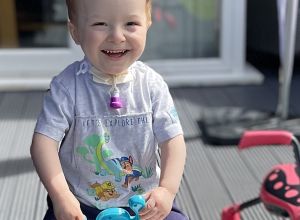
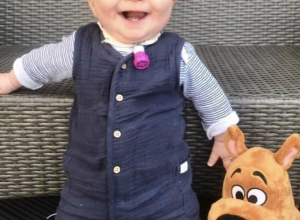
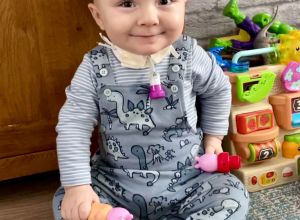

How a tracheostomy is carried out
Ear Nose and Throat (ENT) surgeons perform tracheostomy insertion. This would be carried out in theatre under a general anaesthetic which means your child would be asleep and won’t be able to feel or remember the procedure. After a tracheostomy is inserted your child would remain in intensive care to be closely monitored for at least a week while the wound was healing. After one week the tracheostomy tube is changed for the first time.
Going home from hospital with a tracheostomy
When the medical team are happy with your child’s tracheostomy, they will spend time making sure you and any immediate carers are trained in how to care for your child's tracheostomy tube. This involves how to:
- Suction the tracheostomy (passing a thin tube which hoovers secretions that can block the tracheostomy),
- Change the tracheostomy tube and secure the neck tapes,
- Do basic life support.
Before you go home the occupational therapists will make sure your pram, car seat and home will be safe for your child. The team will discuss with you how to provide a care package to support your family depending on your child’s needs. This may include support for school or nursery.
There are lots of steps in getting used to life with a tracheostomy which can involve a long stay in hospital. Your airway specialist nurse will be available to answer questions you may have and outline the steps in helping support you child.
